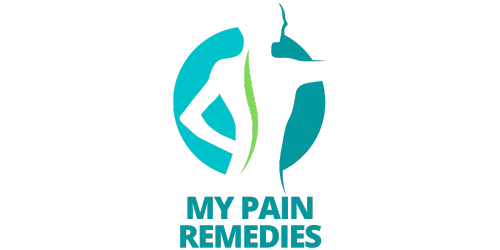Are you tired of relying on addictive pain medications that come with a laundry list of side effects? If so, you’re not alone. Many individuals are seeking alternative ways to manage their pain without the risk of addiction. In this article, we explore the world of non-addictive pain relief options. From natural remedies to holistic therapies, you’ll discover a range of techniques that can help alleviate your discomfort without compromising your well-being. Say goodbye to the cycle of addiction and embrace a healthier, pain-free lifestyle.

Non-Addictive Pain Relief Options
When it comes to managing pain, there are several non-addictive options that can provide the relief you need without the risks of dependency or addiction. These range from over-the-counter medications to alternative therapies that focus on the mind-body connection. In this article, we will explore ten non-addictive pain relief options that you can consider.
1. Nonsteroidal Anti-Inflammatory Drugs (NSAIDs)
1.1 Over-the-Counter NSAIDs
Over-the-counter NSAIDs, such as ibuprofen and naproxen sodium, are commonly used to relieve pain and inflammation. These medications work by reducing the production of prostaglandins, which are chemicals that contribute to pain and inflammation. They are readily available at pharmacies and grocery stores, making them easily accessible for managing mild to moderate pain.
1.2 Prescription NSAIDs
For more severe or chronic pain, your doctor may prescribe stronger NSAIDs that require a prescription. These prescription NSAIDs, like Celecoxib or Meloxicam, may provide greater pain relief and help manage conditions such as arthritis or osteoarthritis. It’s important to follow your doctor’s instructions and be mindful of potential side effects.
1.3 Considerations and Side Effects
While NSAIDs can be effective for pain relief, they may not be suitable for everyone. Potential side effects include stomach irritation, ulcers, and an increased risk of bleeding. It’s essential to discuss your medical history, current medications, and any allergies with your healthcare provider before starting NSAIDs. They will be able to assess whether these medications are appropriate for you and advise on the proper dosage.
2. Acetaminophen
2.1 Dosage and Safety
Acetaminophen, commonly known by the brand name Tylenol, is another option for pain relief. Unlike NSAIDs, acetaminophen does not reduce inflammation but can effectively alleviate pain. It can be particularly useful for headaches, muscle aches, and fever. However, it’s important to follow the recommended dosage and avoid exceeding the maximum daily limit to prevent liver damage.
2.2 Combination Products
Acetaminophen is often combined with other active ingredients, such as caffeine or a small dose of an NSAID, to enhance its pain-relieving effects. These combination products can be beneficial for specific types of pain, but it’s crucial to read the labels carefully and consult with your doctor or pharmacist to ensure safe and appropriate usage.
2.3 Potential Side Effects
While acetaminophen is generally considered safe when used as directed, it can cause liver damage if taken in high doses or combined with alcohol. It’s important to be aware of the potential side effects and risks associated with acetaminophen and use it responsibly.
3. Topical Analgesics
3.1 Menthol/Camphor-based Analgesics
Topical analgesics containing menthol or camphor can provide localized pain relief. These products are applied directly to the skin and work by creating a cooling or warming sensation that distracts from the pain. They can be particularly effective for relieving muscle aches, joint pain, and minor sprains or strains.
3.2 Capsaicin Cream
Capsaicin cream is derived from chili peppers and can be used topically to alleviate pain. It works by depleting a substance called substance P, which is involved in transmitting pain signals. Capsaicin cream is commonly used for conditions such as arthritis, neuropathy, and post-herpetic neuralgia. However, it’s important to note that it may cause a burning or tingling sensation upon application.
3.3 Lidocaine Patches and Gels
Lidocaine is a local anesthetic that can be applied as a patch or gel to numb the area and provide pain relief. It is commonly used for conditions like shingles, post-surgical pain, or minor bruises. Lidocaine patches and gels can be particularly helpful for localized pain, and they are generally well-tolerated with minimal side effects.
3.4 Safety and Considerations
While topical analgesics can be a great non-addictive option for pain relief, it’s important to be cautious when using them. Some individuals may experience skin irritation or allergic reactions to certain ingredients. It’s advisable to perform a patch test on a small area of skin first and discontinue use if any adverse reactions occur. Additionally, it’s crucial to follow the recommended usage instructions and avoid applying these products on broken or damaged skin.
4. Physical Therapy
4.1 Passive Physical Therapy
Passive physical therapy involves treatments performed by a healthcare professional, such as massage, heat therapy, or hydrotherapy. These treatments can help reduce pain, relax muscles, and improve blood circulation. Passive physical therapy is often used in conjunction with other pain management strategies, and the specific treatments vary depending on the individual’s condition and preferences.
4.2 Active Physical Therapy
Active physical therapy focuses on exercises and movements that you perform yourself to improve strength, flexibility, and range of motion. This type of therapy is often recommended for chronic pain conditions, musculoskeletal injuries, or post-surgical rehabilitation. Active physical therapy can help alleviate pain, improve function, and prevent further injury.
4.3 Benefits and Considerations
Physical therapy offers numerous benefits for pain relief and overall well-being. It can help reduce pain without the use of medication, improve mobility, and enhance physical function. However, it’s essential to work with a qualified physical therapist who can tailor the treatment plan to your specific needs and limitations. Compliance with the prescribed exercises and a commitment to the therapy program are crucial for achieving optimal results.
5. Exercise and Stretching
5.1 Low-Impact Aerobic Exercises
Engaging in low-impact aerobic exercises, such as walking, swimming, or cycling, can be highly beneficial for pain management. These activities help improve cardiovascular health, strengthen muscles, and release endorphins, which are natural pain-relieving chemicals. It’s important to start slowly and gradually increase the duration and intensity of your exercises to avoid overexertion or exacerbating your pain.
5.2 Strengthening and Conditioning Exercises
Strengthening and conditioning exercises target specific muscle groups to improve stability, support joints, and alleviate pain. These exercises can be particularly helpful for conditions like arthritis or back pain. It’s advisable to work with a qualified fitness professional or physical therapist to ensure proper form and technique to prevent injury and maximize the benefits.
5.3 Flexibility and Stretching Exercises
Flexibility and stretching exercises, such as yoga or Pilates, focus on improving joint mobility, enhancing muscle flexibility, and promoting relaxation. These exercises can help reduce muscle tension, increase range of motion, and alleviate pain associated with stiffness or tightness. It’s important to perform stretches correctly and avoid overstretching to prevent strain or injury.
5.4 Precautions and Recommendations
Before starting an exercise or stretching routine, it’s crucial to consult with your healthcare provider or a qualified fitness professional, especially if you have any underlying health conditions or chronic pain. They can provide guidance on suitable exercises and help tailor a program that suits your needs and abilities. Proper warm-up, hydration, and listening to your body are also important considerations to prevent injury and optimize the benefits of exercise for pain relief.
6. Heat and Cold Therapy
6.1 Heat Therapy
Heat therapy involves applying heat to the affected area to increase blood flow, relax muscles, and alleviate pain. It can be in the form of hot packs, warm towels, warm baths, or heat wraps. Heat therapy is commonly used for conditions like muscle spasms, arthritis, or chronic pain. It’s important to use heat therapy cautiously and avoid excessive heat, as it can cause burns or skin damage.
6.2 Cold Therapy
Cold therapy, also known as cryotherapy, involves applying cold to the painful area to reduce inflammation, numb the area, and provide pain relief. It can be in the form of ice packs, cold compresses, or cold sprays. Cold therapy is often recommended for acute injuries, such as sprains, strains, or swelling. It’s crucial to limit the duration of cold therapy and protect the skin to prevent frostbite or skin damage.
6.3 Guidelines and Precautions
Both heat and cold therapies can be valuable non-invasive options for pain relief. However, it’s important to follow the recommended guidelines and use these therapies for appropriate durations. If you have circulatory problems, diabetes, or impaired sensation, it’s advisable to consult with your healthcare provider before using heat or cold therapy to ensure it is safe and effective for your condition.
7. Transcutaneous Electrical Nerve Stimulation (TENS)
7.1 How TENS Works
Transcutaneous Electrical Nerve Stimulation (TENS) involves the use of a small device that sends electrical impulses through the skin to stimulate nerves and provide pain relief. TENS works by blocking pain signals and promoting the release of endorphins, which are natural painkillers produced by the body. The device consists of electrodes attached to the skin near the painful area and can be easily used at home.
7.2 Usage and Effectiveness
TENS units can be self-administered, and the intensity and frequency of the electrical impulses can be adjusted according to your comfort level. TENS is often used to manage chronic pain conditions like arthritis, lower back pain, or neuropathy. While the effectiveness of TENS may vary depending on the individual, many users report significant pain relief and improved quality of life.
7.3 Safety and Guidelines
TENS is generally considered safe when used as directed. However, it’s important to follow the instructions provided with the device and consult with your healthcare provider if you are pregnant, have a pacemaker, or have any other medical conditions that may be affected by electrical stimulation. Proper electrode placement, clean skin, and regular maintenance of the device are crucial for ensuring the safety and efficacy of TENS therapy.
8. Acupuncture
8.1 Traditional Chinese Medicine Approach
Acupuncture is an ancient Chinese practice that involves inserting thin needles into specific points on the body to stimulate energy flow and restore balance. It is based on the concept of qi (pronounced “chee”), the vital life force that flows through meridians or energy pathways in the body. Acupuncture aims to alleviate pain by unblocking these energy pathways and promoting the body’s natural healing abilities.
8.2 Western Medical Acupuncture
Western medical acupuncture, sometimes referred to as dry needling, is a form of acupuncture that is based on the principles of traditional Chinese medicine but incorporates a more biomedical approach. In Western medical acupuncture, needles are inserted into specific trigger points or tight muscles to relieve pain and promote relaxation.
8.3 Effectiveness and Potential Risks
Acupuncture has been studied extensively for its effectiveness in managing pain, and many individuals report significant pain relief and improved overall well-being. However, the scientific evidence is mixed, and the individual response to acupuncture can vary. It’s important to choose a qualified and licensed acupuncturist to ensure safety and proper treatment. The risk of adverse effects is minimal when acupuncture is performed by a trained professional, following proper hygiene standards.
10. Herbal Remedies and Supplements
10.1 Turmeric
Turmeric, a spice commonly used in traditional Indian cuisine, contains a compound called curcumin, which has potent anti-inflammatory properties. It can be used as a supplement or added to food to potentially alleviate pain and reduce inflammation. However, it’s important to note that the bioavailability of curcumin is relatively low, and taking it in combination with black pepper or a fat source can enhance absorption.
10.2 Ginger
Ginger, another spice with anti-inflammatory properties, has been used for centuries to help relieve pain and combat inflammation. It can be consumed fresh, dried, or as a supplement to potentially alleviate pain associated with conditions like osteoarthritis or menstrual cramps. Ginger may interact with certain medications, so it’s advisable to consult with your healthcare provider before incorporating ginger into your pain management routine.
10.3 Omega-3 Fatty Acids
Omega-3 fatty acids, found in fatty fish like salmon, trout, and mackerel, as well as flaxseeds and walnuts, have anti-inflammatory properties that may help reduce pain and inflammation. Incorporating these foods into your diet or taking omega-3 supplements can potentially provide pain relief and promote overall health. It’s essential to choose high-quality supplements and consult with your healthcare provider to determine the appropriate dosage for your individual needs.
10.4 Glucosamine
Glucosamine is a compound naturally found in the body and is a building block for cartilage. It is commonly used as a supplement to potentially alleviate joint pain associated with conditions like osteoarthritis. While scientific evidence is mixed, some individuals report improvements in pain and joint function with glucosamine supplementation. It’s advisable to consult with your healthcare provider before starting glucosamine or any other supplements.
10.5 Considerations and Safety
When considering herbal remedies or supplements for pain relief, it’s important to approach them with caution. While natural remedies can provide relief for some individuals, they may not work for everyone, and the evidence to support their effectiveness is often limited. It’s crucial to consult with your healthcare provider before starting any new supplements, as they can have interactions with medications or pre-existing conditions. Additionally, ensure you choose reputable brands and discuss the appropriate dosage for your specific situation.
In conclusion, there are various non-addictive pain relief options available to help manage your pain effectively. From over-the-counter medications like NSAIDs and acetaminophen to alternative therapies like acupuncture and herbal remedies, there are options to suit different preferences and conditions. However, it’s important to approach pain relief with caution and consult with your healthcare provider to determine the most appropriate options for your individual needs. By exploring these non-addictive alternatives, you can find relief from pain while minimizing the risks of dependency and addiction.

